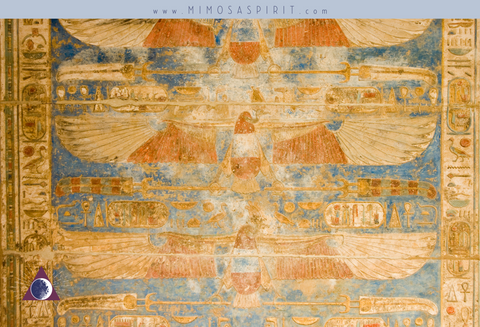
Ganesh: Remover of Obstacles
Ganesh (गणेश) is one of the most loved and easily recognized of Hindu deities. His other names include Ganesa, Ganesha, and Ganapati. The elephant god is the Remover of Obstacles, lord of births and other beginnings, guardian of thresholds and granter of boons. As the deva (divine being) of wisdom, he also presides over the arts & sciences, guarding over books and other storehouses of knowledge. Hindus and other devotees of Ganesh invoke him at all beginnings, and feel they can manifest this benevolent god’s presence simply by thinking of him. The very sight of him brings blessings. Because he both guards thresholds and removes obstacles, his support is very helpful when we are going through changes.
Ganesh is worshipped not only at the beginning of religious rituals, but also on secular occasions such as buying a new car or starting a new business. As the remover of obstacles, he is often called upon in practical matters, and invoked for the lucky beginning of all kinds of ventures.

Ganesh is the son of Shiva and Parvati and brother to the war god Kartikeya. There is considerable debate about his wife, but two sons are attributed to him: Kşema (prosperity) and Lābha (profit).
Look carefully on any statue or other representation of Ganesh you see, and you will often find a mouse near the base of the depiction. The mouse is Ganesh's mount, and many stories exist about how the two came to meet. In one tradition this mouse is actually the demigod Kroncha, who was cursed to learn humility by being turned into a rodent after he’d stepped on the toes of a holy man. He made a fearful rodent, though, and started terrorizing the country. Only Ganesh was able to lasso and tame him. This version of the story is symbolic of taking control of one’s fate by controlling one’s desires.

Various myths tell how the Ganesh came to be part of the Hindu pantheon. In one version, he is the son of an elephant who drank a goddess’s bath water, after her servants had poured the bath out into a river. But the most popular story is that Parvati formed a boy from turmeric paste (a cleansing antiseptic) to guard her while she took her bath. She instructed the boy to guard her bath to make sure she was not disturbed. She told him to allow no one in the door.
When Shiva came home, the obedient boy did as his mother had told him and barred Shiva’s way. Shiva was infuriated by this strange boy, and lopped off his head, sending it far away with a swing of his trident, so that it would never be found. Parvati was enraged when she saw this, and demanded her boy have his head back.
Brahma, who Shiva sought out for advice, suggested he replace the missing head with one from the first living being he found lying with its head pointing north. The first creature Shiva found lying this way was a dying elephant, so this was the head he brought back for Parvati’s son.

Symbols & Correspondences
- One of Ganesh's tusks is typically depicted as broken, because he used the end of it to write a holy text.
- The color red is sacred to Ganesh.
- Ganesh may hold a chakra wheel, a sacred conch shell, a lotus, a sacred thread, and an elephant goad (a tool used to train elephants.)
- Crystals associated with Ganesh include Hematite, Smoky Quartz, and Obsidian. These are powerful stones for grounding and shielding, symbolizing Ganesh's role as a guardian and protector.
- Valerian, Cypress, and Cedar are also associated with Ganesh.





0 comments